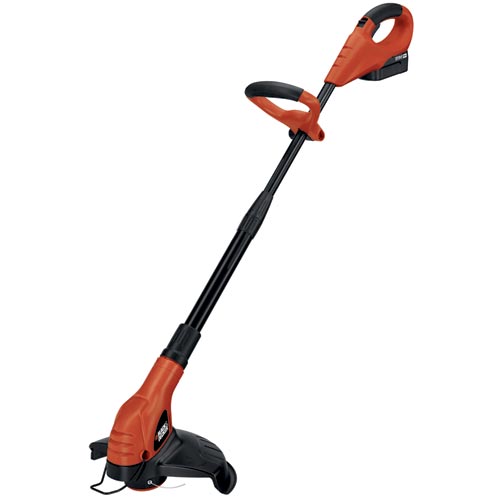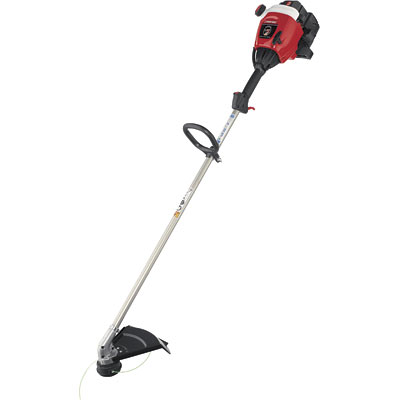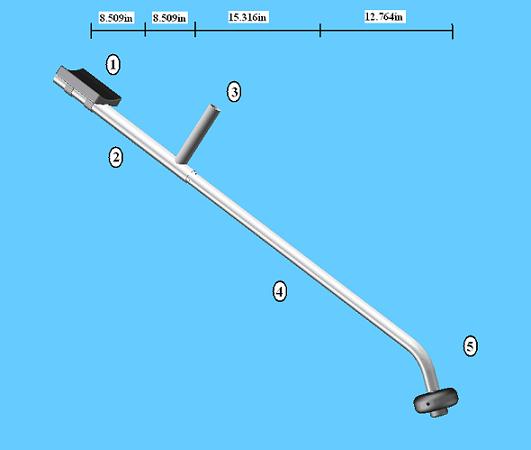Weed whacker analysis
From DDL Wiki
(→Electric) |
(→Original) |
||
| Line 20: | Line 20: | ||
<big>Troybilt Model</big><br /> | <big>Troybilt Model</big><br /> | ||
2-cycle gas motor<br /> | 2-cycle gas motor<br /> | ||
| + | |||
| + | [[Image:weedwhacker.jpg]] | ||
| + | |||
'''Weight''': ~11.5 lbs<br /> | '''Weight''': ~11.5 lbs<br /> | ||
'''Center of Mass''': ~0 inches from center of trigger handle<br /> | '''Center of Mass''': ~0 inches from center of trigger handle<br /> | ||
Revision as of 12:26, 10 November 2008
Contents |
Summary
Mass/Inertia Comparison
Electric
Black and Decker Model
Electric motor
Weight: ~7.0 lbs
Center of Mass: ~35 inches from the center of trigger handle
Inertia about trigger handle: ~6500 lb in^2
Compared to the other models, the inertia is significantly higher. It is over twice the inertia than the gas powered design. The benefit to this design is that overall, it is 60% of the weight of the gas powered design.
Original
Troybilt Model
2-cycle gas motor
Weight: ~11.5 lbs
Center of Mass: ~0 inches from center of trigger handle
Inertia about trigger handle: ~2679 lbs in^2
The benefit of this model over the electric design is that the mass is better balanced, making it easier to handle. However the weight is 50% more.
Design
Our design was meant to eliminate the trade-off between weight and handling. With the new placement of the handles and removing excess weight, our design improves both the weight as well as the inertia to reduce the work needed from the user to operate efficiently.
1) Elbow plate
• Weight = ~1 lb
2) Upper shaft, torsion cable
• Weight = ~.963 lb
3) Handle, trigger
• Weight = ~.229 lb
4) Lower shaft, torsion cable
• Weight = ~1.069 lb
5) Shield, weed whacker upper head, weed whacker lower head, spring, bearing, bump knob, wire
• Weight = ~1.080 lb
m = point mass
r = distance from origin
Assumptions:
• Point masses
• Weed whacker is held at approximately a 45° angle
From our calculations, we found the inertia from the point of the elbow plate to be:
Inertia = 1719.66 lb in2
Weight: ~4.3 lbs (est.) with ~6.5 lbs on back
Center of Mass: ~ inches from elbow plate
Inertia about trigger handle: ~1720 lbs in^2
This mechanical analysis shows the significant change in both mass and inertia our new design has in relation to the original weed whacker. Specifically, the new design’s inertia is 64% of the original. This also means that the energy required to sweep the trimmer one foot is 64% of the original as well. The ease of use is a major concern in our design process, and these numbers show that our new model takes a big step in the right direction. These numbers are also important in considering the new way the trimmer will be held. Although the trimmer will now only be held with one hand, the majority of the weight will be held up by the straps around the forearm. The trimmer originally weighed 11 lbs. Now it weighs just over 4 lbs. The combination of weighing less than half the original weight and the additional support given by the forearm gives us confidence that the user will feel much less strain from our new design. The combination of the lower inertia and the forearm support shows how much easier it will be to use our product. The user will now have significantly more control when moving the trimmer from side to side. The old design required coordination between both hands, and its weight and inertia made it awkward and clumsy. The one-handed design allows the user to control the trimmer with the very simple movements of his arm. This improvement in ease of use allows the user to both trim more efficiently as well as more accurately.



